This post may contain affiliate links. Please read our disclosure policy.
This Basic Sourdough Bread recipe is simple to make but tastes anything but basic! A detailed tutorial with a video!
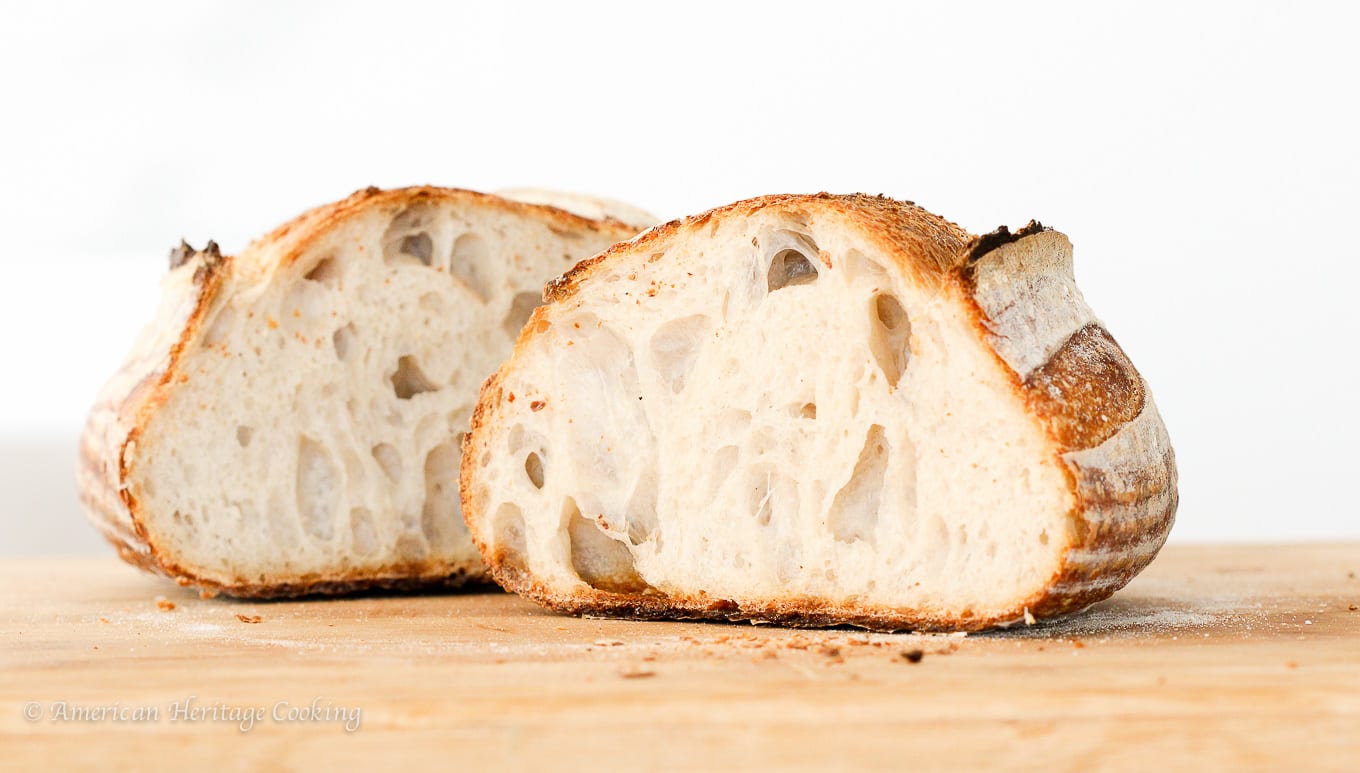
Uncertain and unsettling times make me seek comfort in baking and cooking. Based on the number of friends, who up until this point I didn’t know even had an oven, asking me about baking bread, and the influx of bread posts on Instagram; I think it is safe to say that I am not alone here.
Just three weeks ago I was the pastry chef at two busy Manhattan restaurants and barely had time to breathe. Now it feels like there is too much air.
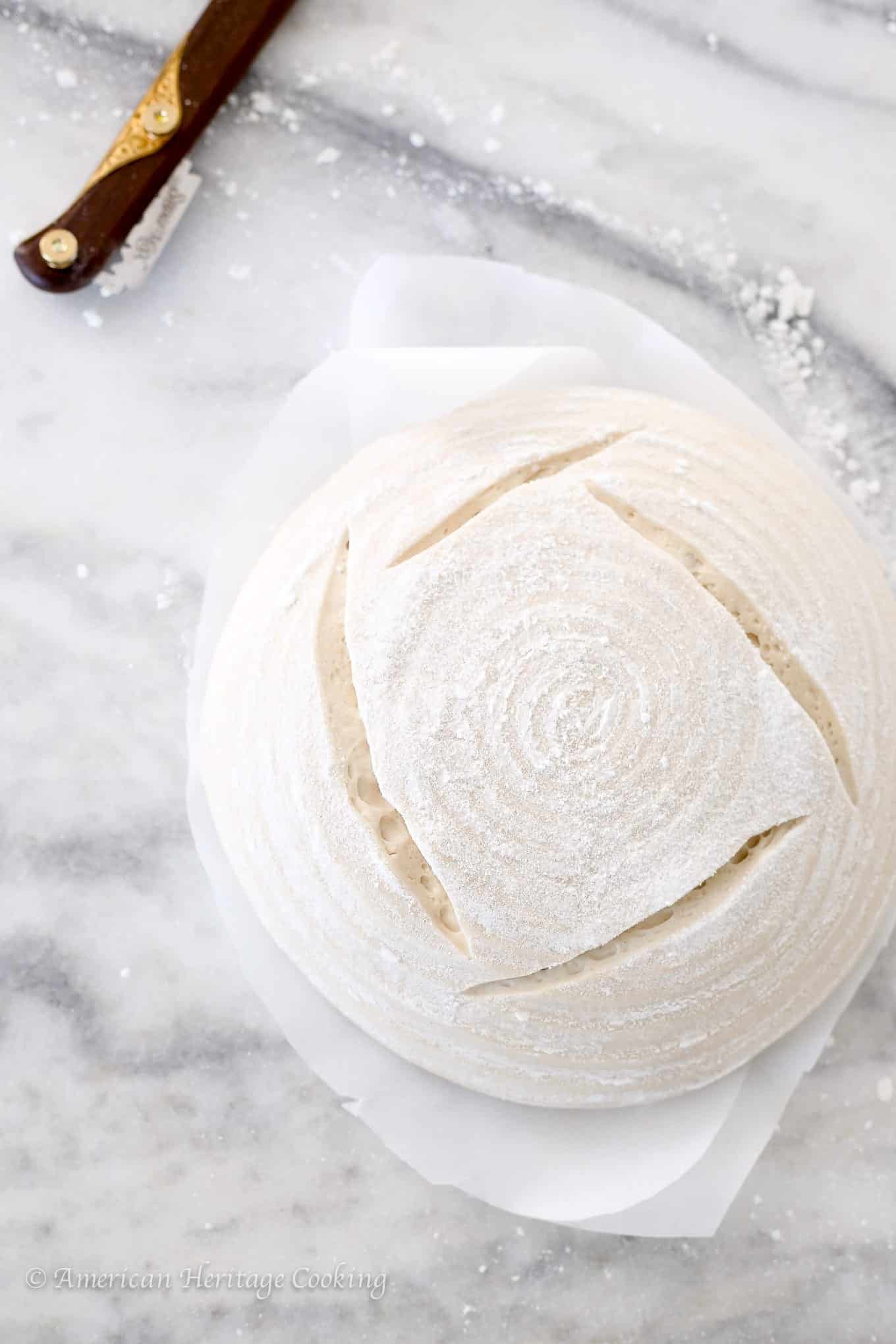
All that is left to do is bake and share everything I know with all of you. Teaching brings me joy and I am welcoming all the joy.
Brace yourselves.
There is nothing that I love more in this world than bread. And that love is backed up by more knowledge than most mere bread-mortals can handle…before falling asleep that is.
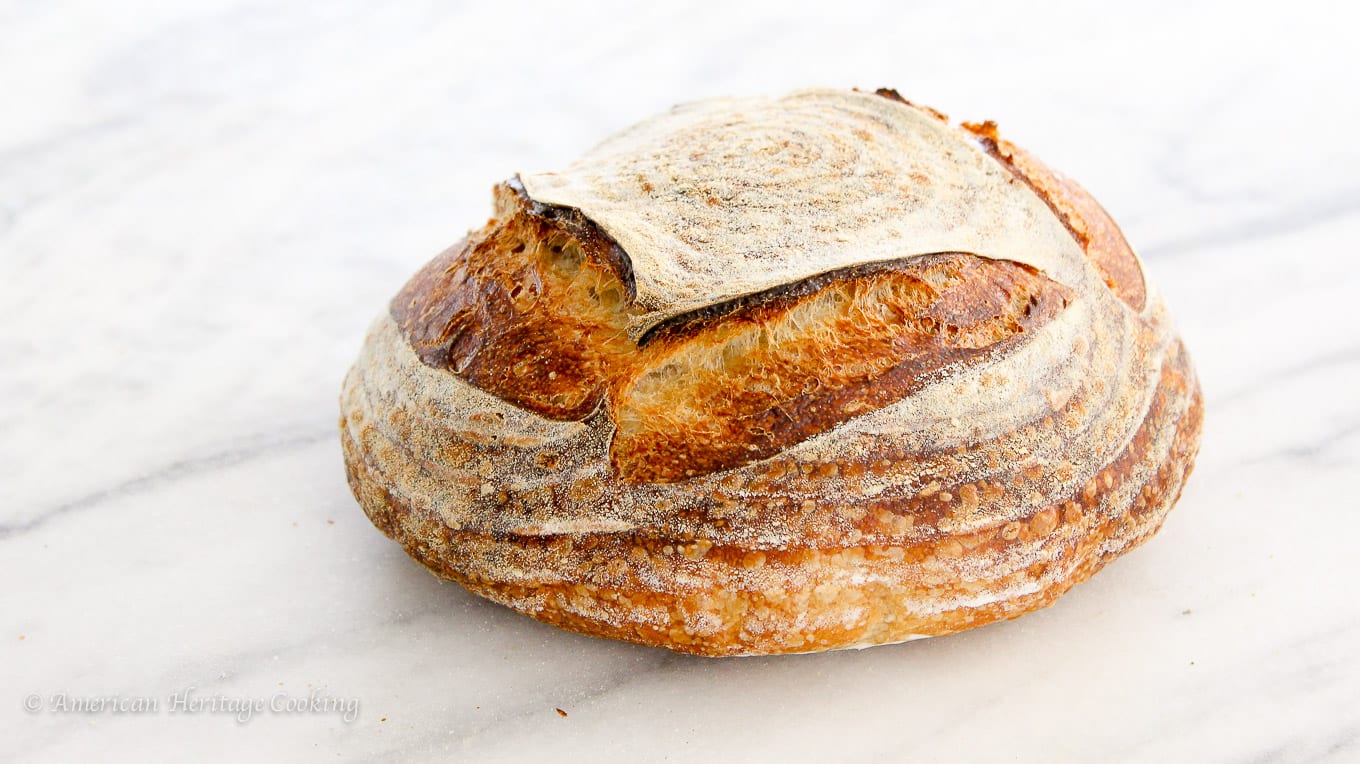
I’ll be sparing (for me) but also feel free to skip to the recipe while I wax poetic about gluten. ?
Le sigh. Sourdough, mon amour.
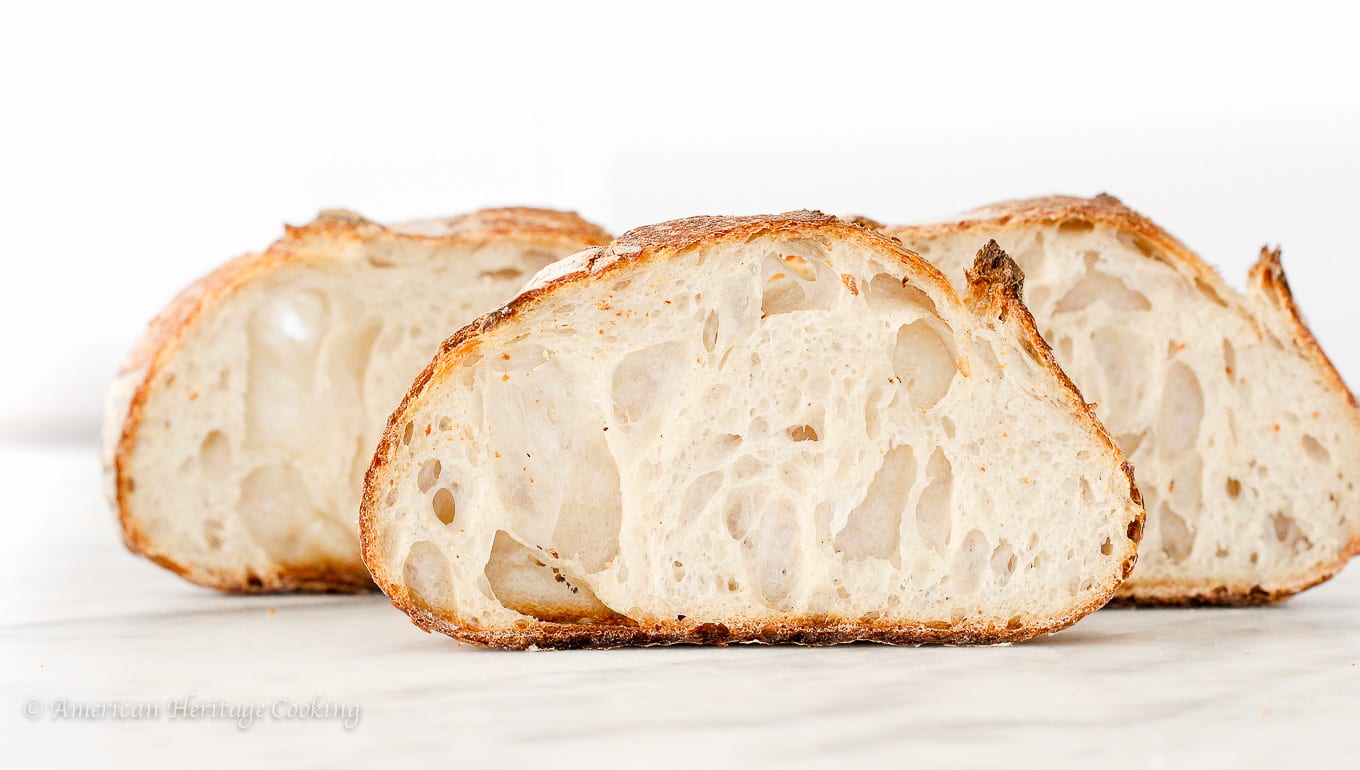
Sourdough is a labor of love. The whole process starts several days before you even want to eat your bread! If you haven’t been maintaining your sourdough starter daily, then take her out of the fridge at least 2 days before you want to make your loaf. Let her sit at room temperature a 12 hours before you feed her. Then start feeding her nightly.
This recipe calls for a liquid levain, which just a fancy way of saying a starter with more water than flour. There is no need to maintain a liquid and a regular starter, simply feed part of your starter a different ratio of water to flour!
The recipe calls for a very specific amount of starter in the levain build, because making bread is all about control, which brings us to our main focus in this tutorial…CONTROL
{Can I get a cheer from the fellow control-freaks out there!}
Controlling your Bread: A short(ish) Discussion
- Control your starter: Controlling how the bread will rise starts the night before with your starter. There is only a small amount (10%) of active starter in the levain build because you want it to double and be at its most active after 12-16 hours after you mix it. If you use too much starter, the yeast will reach its peak too fast and your bread will not be as light!
- Control your Ingredients: Use a kitchen scale for accuracy! I didn’t include volume measurements for a reason. They are inconsistent and bread is a delicate balance of flour, water, salt and yeast; and adding just an extra tablespoon of one will change the whole recipe.
- Controlling Temperature: Temperature is one of the most important factors in making bread from scratch and one of the most difficult to control. Controlling temperature starts with the temperature of your water. When I want my dough to go faster, I use warmer water; but when I want it to be a slow and controlled rise, I use cold water. Additionally, if I am relying on “a warm place” in my apartment or the restaurant in the winter, I use warm water. Ain’t got time for that nonsense.
- Controlling the Flavor: With a bread this simple the main flavors are the flour and the starter. If you mix too much in a machine and the dough gets hot, it will destroy the flavonoids in the flour and your bread will taste like processed white bread. Sad.
- Dry those eyes! That is why we autolyze. An autolyze is when you mix the flour and water together and then let it sit for 15 or more minutes to develop gluten all on its own. In this recipe you need to add all the ingredients because the starter contains a significant amount of the total water for the recipe. You can, and should, still autolyze but it shouldn’t be more than 30 minutes, or it will start to proof.
- Controlling the Gluten: You need just enough gluten to create a structure that will support the ingredients of the dough and also trap the gas that is released by the yeast. The perfect balance will give you that tender crumb (inside of the loaf) and also a light and airy bread. You can also develop the dough too much and then the gluten network will begin to break down. This is pretty much the only thing you can’t recover from when making bread.
- Control the Shape: You choose the shape for your final loaf by your needs. This same recipe can be shaped into dinner rolls, tiny bâtards, a loaf or a large boule (round). But a successful crumb is dependent on ensuring the dough stays in the shape you want while it is proofing and baking. You need to organize the gluten strands to trap as much steam and gas as possible so you end up with large beautiful holes in the crumb. This begins with the preshape. Don’t skip it! The preshape allows the gluten to become accustomed to its final shape. Think of it like easing her into her final home. Then the bench rest allows the gluten to relax so that you can final shape without tearing or aggravating the gluten.
- Controlling the Rise: You want a slow and controlled rise with sourdough, so that it has a chance to develop flavor and the gluten needed to support the structure. You can add a bit of commercial yeast to the dough and it will rise faster but you will sacrifice some flavor. Sometimes, tbh, this is totally worth it. Just saying.
- This control is also why I chose to retard the loaf overnight in the refrigerator, so I could bake it the next day. I needed to do this for the filming of the video, but you could also final proof in a warm spot and bake the same day. It’s all about control.
- Control the Steam: This is more complicated and important than it seems! The first part is controlling how the steam escapes your bread, and you do this by scoring. Cutting the dough in several places dictates where the steam escapes your bread and will also allow for the maximum volume in your loaf. The score needs to be deep enough and not too close to the top of bottom of the loaf. This continues with controlling the steam in the oven. Steam in the first half of the baking process keeps the crust soft and allow the bread to rise as much as possible in the oven before the yeast die. If the crust forms too soon, then the loaf will never reach its full potential. And that would be tragic.
- At home, I use a Dutch oven to capture the steam from the loaf but you can also use a pan. Preheat the pan or metal baking dish in the bottom of your oven and right before you shut your bread inside, pour warm water into the dish so it creates steam, shut the door and say a little prayer that its enough. After 20 minutes remove the top from the Dutch oven or open the door to allow the remaining steam to escape. This is when the crust will form! I can smell it already!
- Control Yourself: Technically speaking you should let the bread cool so that the crumb completely sets and all the alcohol evaporates, but honestly, I find self-control around sourdough overrated. You do you; I won’t tell. ?
Overwhelmed? Don’t be. You’ve got this!

The way you learn to bake perfect sourdough is by practice and by messing it up. Trust me, I’ve been there. I’ve struggled through the frustrations of loaves that won’t rise (I’m lookin’ at you sun-dried tomato sourdough); dough so sticky you want to cry in frustration; dough that over-proofs while you were fighting with savory cooks for control of the oven; under-scored; over-scored; over-mixed; and this list goes on and on!
But that moment when you cut into a fresh loaf and you bury your nose deep into its sourdough center inhaling all your hard work and the yeasty, comforting scent of fresh bread; that moment makes it all worth it. And, once you’ve got your bread ready, you’ve opened yourself up to a billion possibilities, including some apple sausage stuffing from scratch! As a side for some Dutch Oven Pot Roast! Or using your discard for some sourdough pizza dough!
And without further ado the recipe…
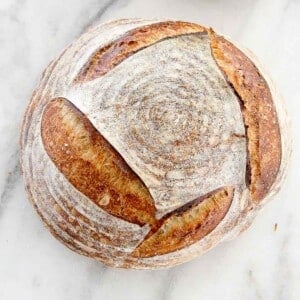
Basic Sourdough Bread Recipe Tutorial
Ingredients
Levain Build:
- 65 g All-Purpose Flour
- 81 g Water
- 7 g Yesterday’s starter Recipe Here
Final Dough:
- 340 g All-purpose flour
- 38 g Rye Flour
- 226 g Water
- 10 g Salt
- 150 g Liquid Levain above
Additional Ingredients:
- Rice flour for dusting the proof basket if using
Instructions
Mix the Liquid Levain:
- The 12 to 14 hours before you want to mix your dough, build the levain. In a clean container mix the flour, water and starter. Stir with a small spatula until the water has hydrated the flour. With this small of a quantity I find it easier to double the amount of the levain build, so that there is room for waste and you have enough to make your dough. Here is a whole tutorial on building a liquid levain
Make the Final Dough:
- Combine all ingredients for the final dough in the bowl of a stand mixer fitted with the dough hook. You can also incorporate the ingredients with a paddle. Once the flour has been completely incorporated, let the dough sit for 15 minutes (autolyze) to develop gluten.
- Turn the mixer up to medium speed to develop the gluten. With a dough that has this amount of water, it will be difficult to develp on the gluten in a home stand mixer, so mix until you see strands forming on the top and the dough looks like it is pulling away from the sides of the bowl. This dough will not form a ball around the hook because it is too wet of a dough (this is what we want!).
- Scoop dough into an oiled bowl and cover with plastic wrap.
- Place in a warm spot for 30 minutes.
- First set of folds: Fold each of the four sides into the center, pulling the dough up and allowing it to smack down on top of the remaining dough in the bowl. This is developing more gluten! Cover and proof an additional 15 minutes.
- Final set of folds: Repeat the process as with the first set of folds. By the point the dough should hold together very well and stay in a ball in the center after you’ve completed your folds. If it immediately relaxes out to the sides of the bowl, you don’t have enough gluten and you should repeat this process again. It just means that you didn’t develop as much gluten in the mixer. This isn’t a bad thing! Its just a process!
- Bulk Proof: Cover the dough and place back into the warm spot to proof. Check the dough every 45 minutes. This will take about 2.5 hours. You want to oil or flour your hand and feel the dough. It should feel light and airy and not stiff or dense.
- Pre-shape: Dust the top of the dough in the bowl with flour. Turn the dough out onto a lightly (I mean lightly!) floured surface. Fold each of the four sides towards you into the center, turning the dough after each fold. This will create a little packet. Flip the dough so the seam in on the counter. Shape it into a round by using both hands to pull the dough towards you. Once you have a round ball with a smooth top, allow it to sit and bench rest for 15 minutes.
- Final Shape: Repeat the same process as with the pre-shape. Place the dough on a piece of parchment or flip it upsidedown into a proof basket that has been dusted with rice flour. Cover with plastic wrap.
- To bake same day: Place the basket back into the warm spot and allow to rise another 2.5 to 3 hours or until it feels light and airy and has doubled in volume in the basket. The volume will be tough to tell if you are proofing it on parchment because it doesn’t contain or control the shape of the sourdough. Proceed to the baking step below.
- To bake next day: Place covered basket into the refrigerator to retard the dough overnight. This will slow the proofing of the yeast and will allow you to bake 12-18 hours later.
- Baking: Preheat the oven to 450F convection or 470F non-convection with the Dutch oven or baking pan inside. Meanwhile, cut a piece of parchment a little larger than the loaf. When your oven is ready toss a little flour onto the dough then turn the dough out of the basket onto the parchment. [If you proofed your dough on parchment, skip this step] Score the dough using a lame, razor blade or pairing knife. You want to score midway between the bottom and the top. With this bread in a round shape, I like to make a square so that it rises straight up and maintains its round shape.
- Take the preheated Dutch oven from the oven, gently lower the dough into the pot and cover it with the lid. Place in the oven and bake 20 minutes. Remove the lid and continue baking 25 minutes or until the loaf is a dark amber brown.
- Remove the loaf from the Dutch oven, remove the parchment carefully, and then cool completely. This allows the crumb to set.
- Enjoy!

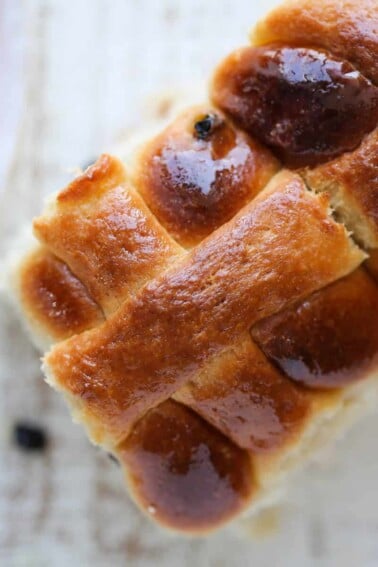

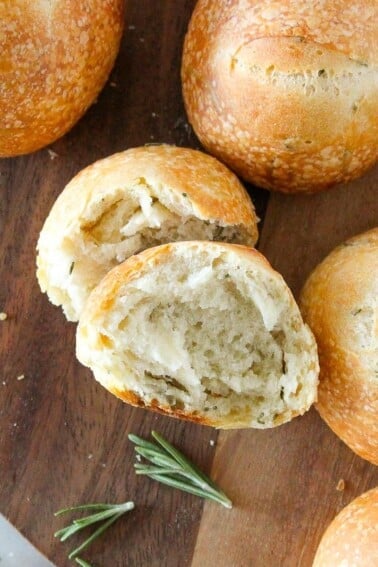








This is the 1st recipe I tried with my new sourdough starter. I was super nervous, but watching your video a few times gave me more confidence. I did the overnight proofing, and I’m pleased to say that my bread turned out well for my first attempt!
I give it a 5 because it looks great. I will try this recipe next time I bake. I noticed you don’t do an Autolyse. Just wondered why.
I have been baking sourdough for a while now and it turns out well. I have incorporated other recipes together and wanted one that is close to what I have ended up with. (my recipe page is wrinkled with writing all over it. Yours is as close as I have found!
Thank you.
Hi Jody! I’m so pleased that this is the closest you’ve found to what you love! I do use a short autolyse in this recipe, I let it sit for 15 minutes before mixing. This lets the flour fully hydrate and the gluten starts to develop. You could extend your autolyse time, based on your preferences, but that’s what gets me the best texture. Report back and happy baking!